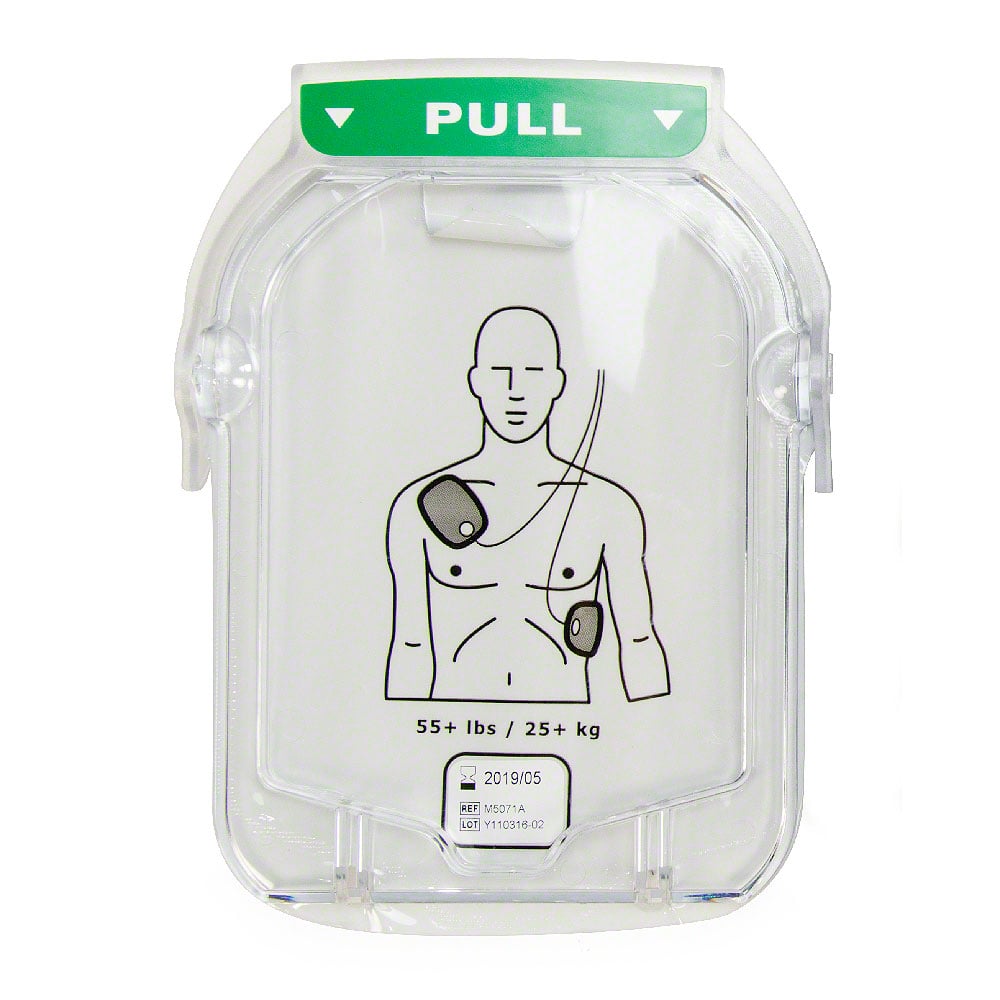You've made the crucial decision to get an Automated External Defibrillator (AED). Now you face another important choice that can feel confusing: should you get a semi automatic or a fully automatic model? This isn't just a technical detail. It's about how a real person will interact with the device during a stressful, life or death emergency.
For most organizations with lay responders like homes, schools, and small businesses, a fully automatic AED is the recommended choice due to a lower risk of user hesitation and error. For teams of trained professionals, a semi automatic AED offers more control. This guide will walk you through the data and real world scenarios to help you choose with absolute confidence.

The core difference one button two experiences
The difference between the two models comes down to a single action: delivering the electric shock. Both types of AEDs analyze the patient's heart rhythm and determine if a shock is necessary. Neither device will ever shock a person who doesn't need it. The only difference is how the shock is administered.
A semi automatic AED has a button that the rescuer must press to deliver the shock after the device advises it.
A fully automatic AED does not have a shock button. After advising a shock is needed, it will provide a verbal countdown and then deliver the shock on its own.
This seems like a small distinction, but it has a major impact on the rescuer's experience and the effectiveness of the response.
Data driven decision why user hesitation is the biggest factor
In the calm of an office, pressing a button seems simple. But during a chaotic cardiac arrest, human hesitation is a real and dangerous factor. The fear of doing something wrong can cause even well intentioned rescuers to freeze.
The data on this is incredibly clear. A study observing untrained users found a 7% error rate with semi automatic AEDs. The same study found a 0% error rate with fully automatic models. This is because fully automatic devices remove the moment of hesitation. They take the responsibility of that final action off the rescuer's shoulders, allowing them to focus on safety and clear communication.
Another study found that out of more than a thousand instances where a semi automatic AED advised a shock, operators failed to press the button 33 times. A fully automatic device eliminates this risk of "failure to shock," which is why market trends project they will capture 85% of the market share by 2025.
Comparison at a glance
To make it easier, here is a direct comparison of the key factors you should consider when making your choice.
|
Feature |
Semi-Automatic AED |
Fully Automatic AED |
|
User Action |
Rescuer must press a shock button. |
Device delivers shock automatically. |
|
Best For |
Trained responders (EMS, police) who need control over timing. |
Untrained or lay responders (offices, schools, homes). |
|
Cognitive Load |
Higher. The rescuer must process the instruction and take action. |
Lower. The rescuer only needs to listen and ensure no one is touching the patient. |
|
Hesitation Risk |
Higher. Rescuer may pause or freeze before pressing the button. |
Eliminated. The device manages the timing and delivery of the shock. |
|
Safety |
Both are equally safe and will only shock when a fatal arrhythmia is detected. |
Both are equally safe and will only shock when a fatal arrhythmia is detected. |
|
User Confidence |
May feel more in control. |
May feel more confident knowing the device handles the most critical step. |
Which is right for your organization a scenario based guide
Your specific environment and the likely users of the AED are the most important factors in your decision.
For schools community centers and offices
For most public access environments where the rescuer could be a teacher, a coworker, or a bystander, a fully automatic AED is the superior choice. The goal is to make the process as simple and foolproof as possible for someone with little to no training. By removing the need to press a shock button, you reduce the chance of hesitation and empower anyone to act decisively. Choosing the best AED for schools often comes down to this single factor of usability under pressure. The same logic applies when selecting an AED for your office.
For trained professionals like police and first responders
Professional rescue teams often prefer semi automatic AEDs. In a coordinated rescue, the team leader may want to control the precise moment of shock delivery to ensure all team members are clear and the environment is secure. This level of control is valuable for experienced users who are comfortable with the responsibility and operate in dynamic situations. These devices are common in high risk environments where advanced care protocols are in place.
For noisy or high stress environments
Think about a noisy factory floor, a busy construction site, or a crowded gym. In these settings, clear communication is difficult. A fully automatic AED with a loud, clear countdown (“Shocking in 3... 2... 1...”) can cut through the noise and provide an unmistakable warning for everyone to stand clear. This removes any ambiguity, which is critical for safety. For some business owners, the tactile confirmation of pressing the button on a semi automatic model provides peace of mind, making Defibtech AEDs a great choice for small businesses and public venues.
The final step confidently choose your defibtech lifeline
Now that you understand the key differences and have considered your specific environment, you can confidently select the right model for your needs. Both options are designed for reliability and ease of use, ensuring you are prepared for an emergency.
The Defibtech Lifeline AED Value Package allows you to choose either the semi automatic or fully automatic version, ensuring your investment is perfectly tailored to your team and location. This package bundles everything you need to establish your AED program, providing a complete solution from day one.
Frequently asked questions
Q: Is a fully automatic AED safer than a semi automatic one?
A: No, both are equally safe. An AED, whether semi or fully automatic, performs a detailed analysis of the heart’s rhythm. It will only advise or deliver a shock if it detects a life threatening arrhythmia that a shock can correct. It is impossible for an AED to shock someone who doesn't need it.
Q: Is there a big price difference between the two types?
A: Generally, the price difference is minimal or nonexistent. At Response Ready, we offer both the Defibtech Lifeline semi automatic AED and the fully automatic version at the same price point, so your decision can be based purely on what’s best for your organization, not your budget.
Q: Is the maintenance different for a fully automatic AED?
A: The maintenance is identical. Both models require the same regular checks for the AED battery and pads to ensure they are within their expiration dates and ready for use. Our Response Ready App helps automate these readiness checks for any device you choose.
Q: Can anyone use an AED without training?
A: Yes. Modern AEDs are designed for use by anyone, regardless of training, thanks to clear voice prompts and simple instructions. Good Samaritan laws in all 50 states provide liability protection for individuals who act in good faith to help during an emergency. However, AED and CPR training is always recommended to build confidence and improve the overall quality of emergency response.
Q: Why is the Defibtech Lifeline a good choice for my organization?
A: The Defibtech Lifeline AED is known for its durability, simplicity, and award winning ergonomic design. It's rugged enough for demanding environments yet intuitive enough for an untrained user. By offering it in both semi automatic and fully automatic models, it provides a flexible, high quality solution that can be tailored to any workplace, school, or community setting.






